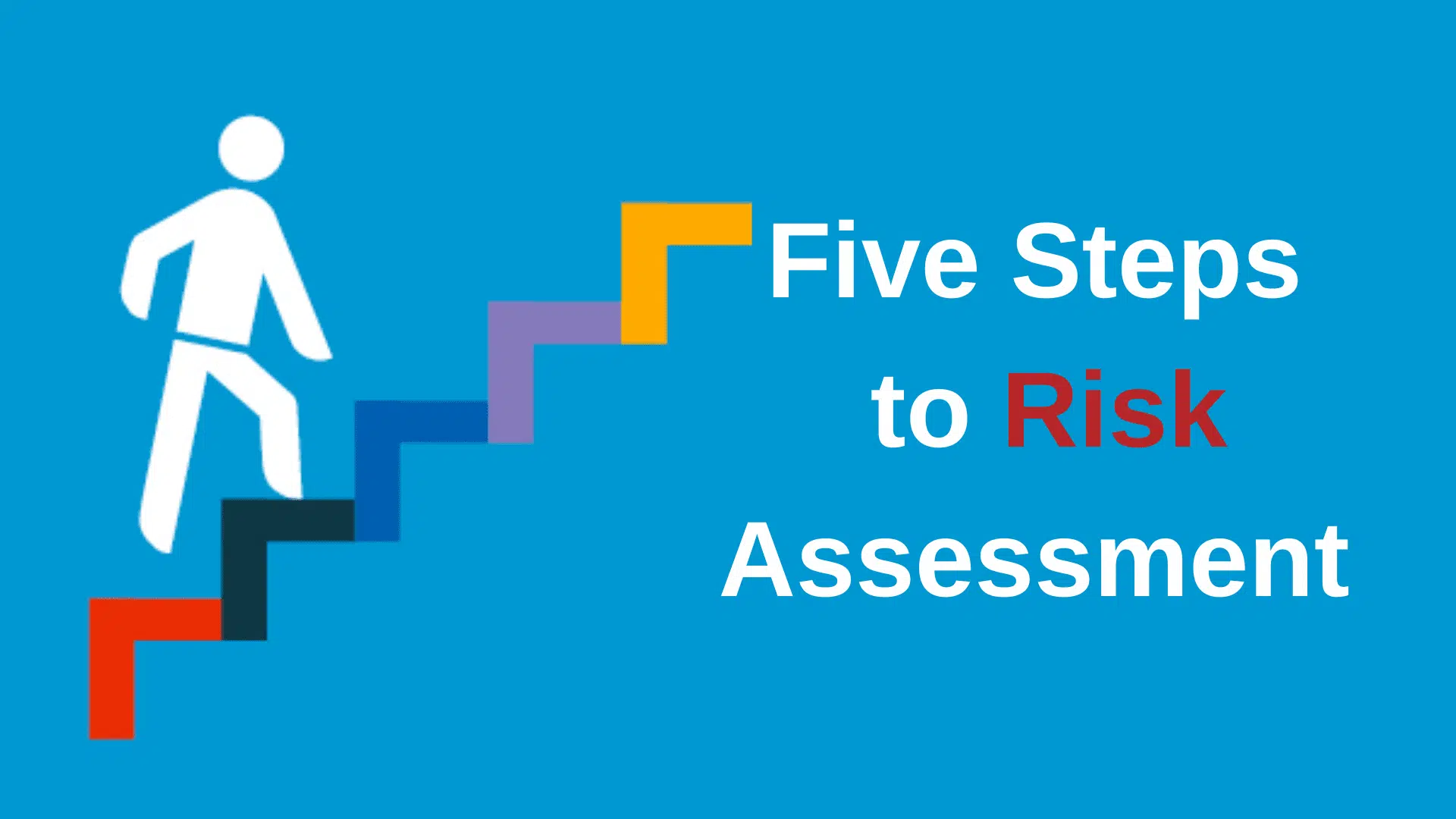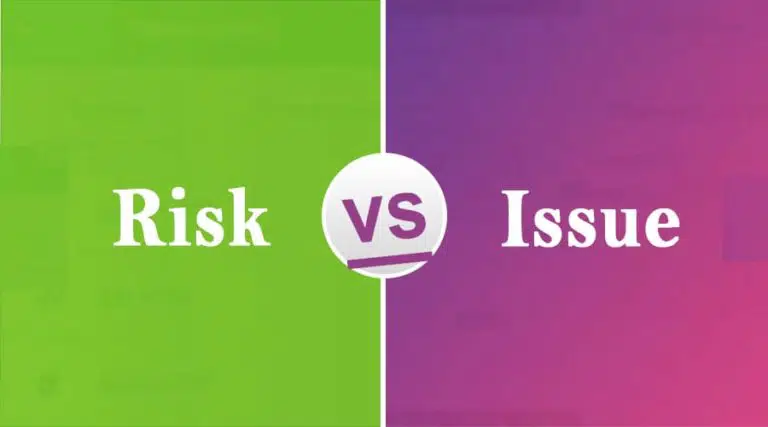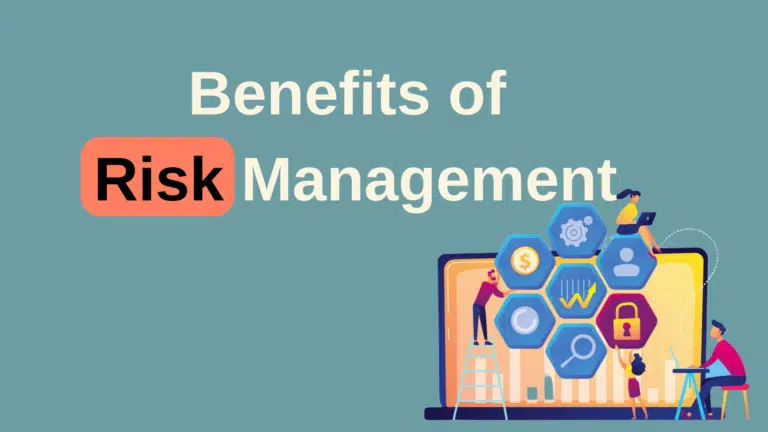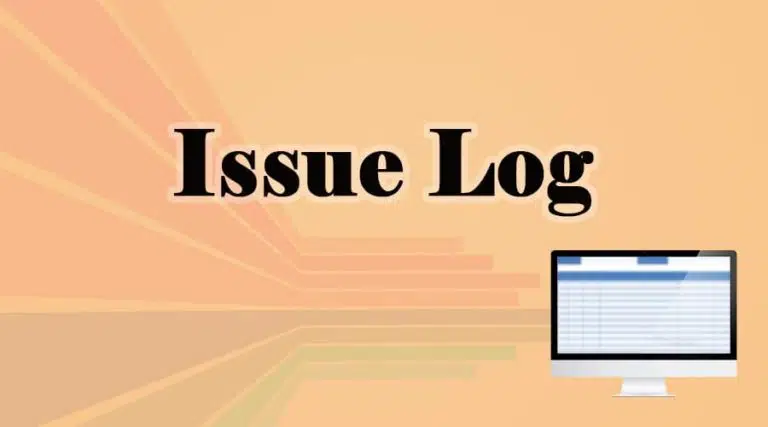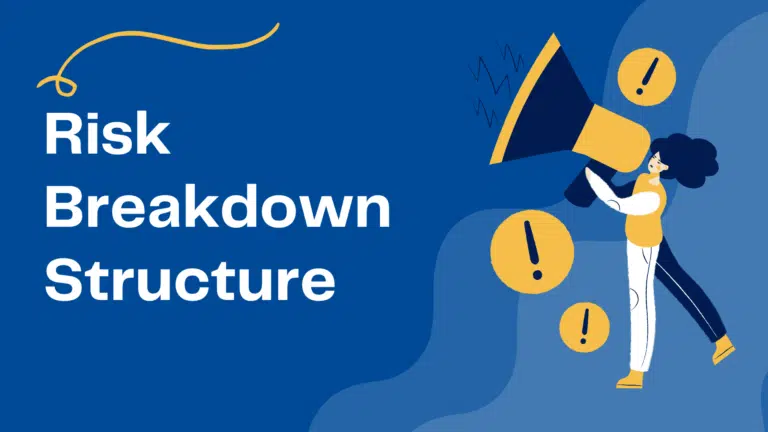Risk is an inherent part of the business. The key to managing these risks lies in conducting a thorough assessment.
Risk assessment is a part of risk management which is the key to business success and a legal requirement in many countries.
Risk assessments are a legal obligation, and businesses must protect employees and the general public from harm. In the USA, under the Management of Health and Safety at Work Regulations, employers are legally required for the following:
- Identification of hazards that could cause injury or illness in your business
- Determine the likelihood of common hazards harming someone and how seriously
- Take action to eliminate or control the hazard
Risk management (or enterprise risk management) is a process for controlling health and safety risks in work activities. It provides a safe work environment and aims to help reduce the negative events or impacts and increase the positive risk events or impacts.
Risk assessment helps you identify, analyze, and evaluate risks associated with workplace activities, projects, or situations. By understanding and assessing hazards, you can make informed decisions, allocate resources, and develop strategies to manage and reduce workplace dangers.
It is a careful examination of what could cause harm to people so that you can take precautions to prevent it.
Risks can be positive or negative. Negative risks are knowns as hazards or threats, and positive risks are known as opportunities.
This comprehensive guide will walk you through five steps to risk assessment. These steps will provide a structured framework to identify and evaluate risks, prioritize them based on their impact, and develop risk response strategies to manage their effects.
By the end of this guide, you will have a solid understanding of identifying and assessing risks, evaluating their potential consequences, and developing treatment plans. As a result, you can confidently navigate uncertainties, ensuring a proactive approach to risk management and a higher probability of achieving your desired outcomes.
The risk manager or any other competent person appointed by the organization performs the risk management process.
Five Steps to Risk Assessment
The five steps to risk assessment are as follows:
- Risk Identification
- Risk Analysis
- Risk Evaluation
- Risk Treatment
- Risk Communication and Documentation
Step 1: Risk Identification
Risk identification is the foundation of comprehensive risk assessment. It identifies and documents hazards or opportunities that could lead to adverse events or provide benefits. After recognizing these risks, you can take appropriate risk management measures.
However, note that before identifying the risk, you must define the risk and find the risk attitude of stakeholders. This helps you find an acceptable level of risk for your organization, and then you can develop your risk management plan.
Risk identification is an iterative process you can repeat when encountering significant hazards.
Defining Risks
The first step in hazard identification is to define what constitutes a hazard. A hazard is any source, situation, or act that has the potential to cause harm, damage, or adverse effects. Hazards can come in various forms, such as physical, chemical, biological, ergonomic, or psychosocial.
Once hazards are defined, assessing their associated risks is next. Understanding the potential risks allows you to prioritize and allocate resources effectively to address the most critical threats.
You will also identify positive risks to develop strategies to realize those opportunities.
Gathering Information
Gathering relevant data and information from various sources is important to identify hazards. This includes reviewing incident reports, conducting site inspections, consulting subject matter experts, studying historical data and trends, reviewing OPA, past project files, lessons learned, etc.
Additionally, stakeholders’ input and feedback can provide valuable insights into potential hazards that you may overlook.
Using Expert Knowledge and Experience
Expert knowledge and experience play a vital role in risk identification. Engaging individuals with specialized knowledge in specific domains or industries can help identify risks that may not be immediately apparent. In addition, their expertise can illuminate industry-specific risks, best practices, and emerging trends, enabling a more comprehensive risk identification process.
Documenting Risks
Once you identify the risks, it is crucial to document them in a risk register. The risk register is a working document for recording risks, which involves recording the nature of each hazard, its location, potential causes, and existing control measures.
Categorizing risks based on their types, severity, and likelihood of occurrence can facilitate further risk analysis and evaluation.
Continuous Review and Improvement
Risk identification is an ongoing process that requires regular review and improvement. New hazards may emerge due to technological changes, work processes, or environmental factors.
Therefore, it is important to establish a culture of continuous monitoring and evaluation to ensure that risk identification remains up-to-date and aligned with evolving circumstances.
By identifying risks, you can understand the risks and develop appropriate risk management strategies. As a result, this proactive approach lays the groundwork for the subsequent steps in the risk assessment process and sets the stage for comprehensive risk analysis and evaluation.
Step 2: Risk Analysis
After identifying potential hazards in the previous step, risk analysis is the next crucial phase of assessment. Risk analysis involves quantifying each identified risk’s likelihood and potential consequences.
This step helps you separate high-risk and low-risk, prioritize them, and allocate appropriate resources for effective risk management.
Finding the Likelihood of Occurrence
Assessing the likelihood of a risk occurring is essential to understand its potential impact. It involves considering historical data, expert opinions, and statistical analysis to determine the probability of the risk manifesting.
You can categorize likelihood into rare, occasional, frequent, or near-certain, depending on the frequency of occurrence.
Assessing the Risk Impact
Understanding the consequences of a risk is crucial in determining the severity of its impact. This includes analyzing possible outcomes, such as injuries, financial losses, environmental damage, or reputational harm. Consequences can be qualitative (e.g., minor, moderate, or severe) or quantitative (e.g., the monetary value of losses).
Determining the Overall Risk Level
By combining the likelihood and consequences, the risk assessor can determine the expected monetary value and the overall level associated with each risk. For example, this becomes commonly represented in a risk matrix, where the likelihood and consequences intersect to represent risk levels visually.
This helps prioritize risks based on severity and guides decision-making in response strategies.
Prioritizing Risks
Once risk levels are determined, it is essential to prioritize them based on their severity and potential impact. This helps effective resource allocation and risk management planning. High-priority risks require immediate attention and allocation of resources, while you can address lower-priority risks later or with less intensive measures.
Risk analysis provides a systematic framework for understanding the potential consequences of hazards and lets you make informed decisions regarding response strategies. In addition, it helps identify critical areas that require attention, facilitating effective risk control measures and resource allocation.
Risk assessment is not a one-time process. Instead, you should periodically review and update it as new information becomes available or circumstances change. By continuously evaluating and refining risk analysis, you can adapt to evolving risks and ensure the effectiveness of your risk management efforts.
Step 3: Risk Evaluation
Once you identify the risks, risk evaluation is the next step in the assessment process. Risk evaluation involves assessing the acceptability of identified risks, determining their significance, and developing appropriate risk treatment strategies.
This step helps you find the level of risk for your project or business and lets you make informed decisions about managing them.
Comparing Risks Against Established Criteria
Remember, establishing criteria or standards against which risks you can measure is important. These criteria include legal requirements, industry regulations, organizational policies, and stakeholder expectations.
By comparing identified risks against these criteria, you can determine if the risks are acceptable or if further measures are necessary.
Identifying Risk Response Strategies
After evaluating risks, you can develop appropriate response strategies. These strategies reduce the likelihood and severity of potential harm or adverse consequences.
Risk mitigation options may include implementing engineering controls, developing safety protocols, providing training and education, or transferring risks through insurance or contracts.
Furthermore, some risks you can accept, depending on various factors, such as the organization’s risk appetite, potential consequences, and the likelihood of occurrence. Risks that fall within acceptable thresholds may be tolerable, while risks that exceed those thresholds may require immediate attention and mitigation.
For positive risks, the response strategy will aim to realize those opportunities.
Engaging Stakeholders in the Evaluation Process
Involving stakeholders is crucial during the risk evaluation stage. Stakeholders may include project team members, employees, customers, regulators, and the broader community. Their perspectives, concerns, and expertise provide valuable insights into risk acceptability and help identify potential blind spots or overlooked risks.
Effective communication and engagement ensure the risk evaluation process is comprehensive and inclusive.
Risk evaluation is essential in risk assessment as it guides decision-making on whether you can accept the risks or if further action is required. In addition, it provides a basis for determining the priority and extent of risk response strategies.
By evaluating risks, you can effectively allocate resources, implement appropriate controls, and reduce overall risk exposure.
Risk evaluation is an iterative process; you should periodically revisit it or when circumstances change. As new information becomes available or risks evolve, it is essential to reassess the acceptability of risks and adjust treatment strategies accordingly.
Step 4: Risk Treatment
After identifying and evaluating risks, risk treatment is the next critical step. Risk treatment focuses on developing and implementing strategies to manage identified risks.
This step aims to reduce the likelihood and severity of adverse events, ensuring individuals’ safety and well-being and achieving desired outcomes. This process also increases the likelihood and severity of opportunities.
Developing and Implementing Risk Response Plans
Risk response plans outline specific actions and measures to manage the identified risks. Also, you should tailor these plans to address the unique characteristics of each risk and align with the overall management objectives.
Risk response strategies may involve implementing engineering controls, establishing administrative procedures, adopting personal protective equipment (PPE), or implementing redundancy systems.
Selecting Appropriate Risk Control Measures
Risk control measures are specific actions to manage risks. Select measures that are feasible, effective, and aligned with regulatory requirements and industry best practices.
These measures can be preventive (e.g., implementing safety training), protective (e.g., installing safety barriers), or responsive (e.g., developing emergency response plans).
Allocating Resources for Risk Management Activities
Implementing risk response strategies requires adequate allocation of resources, including financial, human, and technological resources. Therefore, organizations need to ensure that sufficient resources are allocated to effectively support the implementation of risk management measures.
This includes budgeting for training, equipment, maintenance, and continuous monitoring and improvement of risk treatment initiatives.
Monitoring and Reviewing the Effectiveness of Risk Treatments
Risk treatment is an ongoing process that requires continuous monitoring and evaluation. Regularly assessing the effectiveness of implemented risk control measures helps identify gaps or areas for improvement.
By conducting inspections, audits, and performance evaluations, you can ensure that risk treatments remain effective and adaptive.
You can effectively reduce the likelihood and impact of identified risks by implementing appropriate treatment strategies. This proactive approach promotes safety, protects assets, and enhances operational performance.
Regular communication and collaboration among stakeholders are vital throughout the treatment process to ensure the successful implementation and maintenance of risk control measures.
It is important to note that risk treatment is not a one-size-fits-all approach. Instead, you should tailor the selection and implementation of risk control measures to the specific context, hazards, and organizational requirements. In addition, you should also review and update risk response or treatment strategies regularly to adapt to changing conditions and emerging risks.
Step 5: Risk Communication and Documentation
Risk communication and documentation are integral components of the risk assessment process. They are crucial in ensuring transparency, promoting awareness, and facilitating informed decision-making regarding identified risks.
This final step focuses on sharing risk information, documenting risk assessment findings, and maintaining a risk register to support ongoing management efforts.
Communicating Risk Information
Clear and concise communication of risk information ensures stakeholders understand the identified risks, their potential consequences, and the implemented risk treatment measures.
Communication channels may include meetings, presentations, reports, and written materials.
Tailoring the message to the target audience, considering their knowledge, language, and specific needs, is important.
Engaging Stakeholders
Stakeholder engagement is key to effective risk communication. It involves actively involving individuals or groups affected by or interested in the identified risks. Engaging stakeholders allows for the exchange of information, the incorporation of diverse perspectives, and the building of trust.
It also facilitates the identification of additional hazards or risk factors you may overlook.
Documenting Risk Assessment Findings
Thorough documentation of the risk assessment process is essential for future reference and continuous improvement. This includes recording the identified risks, risk analysis results, risk evaluation outcomes, and the selected risk response strategies.
Accurate and detailed documentation ensures that information is readily available and relevant parties can easily access it.
Maintaining Risk Register
You should regularly update the risk assessment records in the risk register to reflect changes in the identified hazards, risk levels, or implemented control measures. This ensures the documentation remains current and aligns with the evolving risk landscape.
Records should be securely stored and easily retrievable to support ongoing risk management efforts and regulatory compliance.
Promoting a Culture of Learning and Improvement
Risk communication and documentation provide opportunities for learning and improvement. Organizations can identify patterns, trends, and areas for enhancement by analyzing past risk assessment findings and outcomes.
This feedback loop fosters a culture of continuous improvement, allowing for refining risk management strategies and optimizing future assessments.
Effective risk communication and documentation contribute to better decision-making, enhanced risk awareness, and adaptability to changing circumstances. By maintaining clear and comprehensive records, organizations can demonstrate their commitment to risk management, comply with regulatory requirements, and effectively communicate with stakeholders.
Risk communication and documentation are ongoing processes requiring regular updates and review. As new risks emerge or organizational contexts change, it is crucial to communicate relevant information and document any adjustments to response strategies accordingly.
Summary
By following the five steps to risk assessment, you will become equipped with the knowledge and tools to navigate risks proactively and make informed decisions.
By integrating risk assessment into your decision-making processes, you can confidently enhance safety, protect assets, and achieve desired outcomes. Embrace the power of risk assessment, and empower yourself and your organization to manage uncertainties, optimize performance, and provide a safer working environment for your employees.
Risk assessment is an iterative process, and you can repeat the assessment when any new risk becomes identified, or there are any significant changes in the working conditions.

I am Mohammad Fahad Usmani, B.E. PMP, PMI-RMP. I have been blogging on project management topics since 2011. To date, thousands of professionals have passed the PMP exam using my resources.

